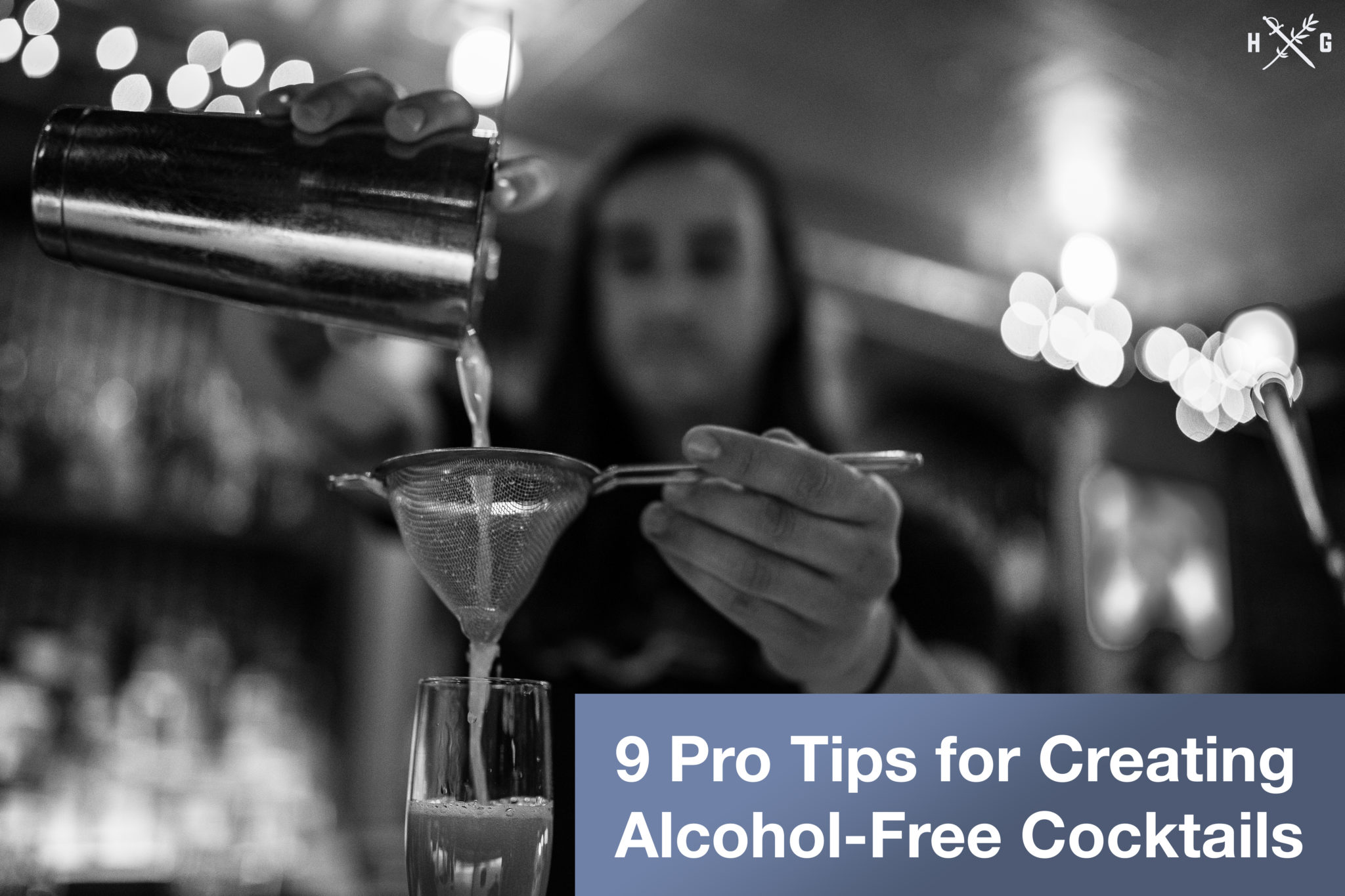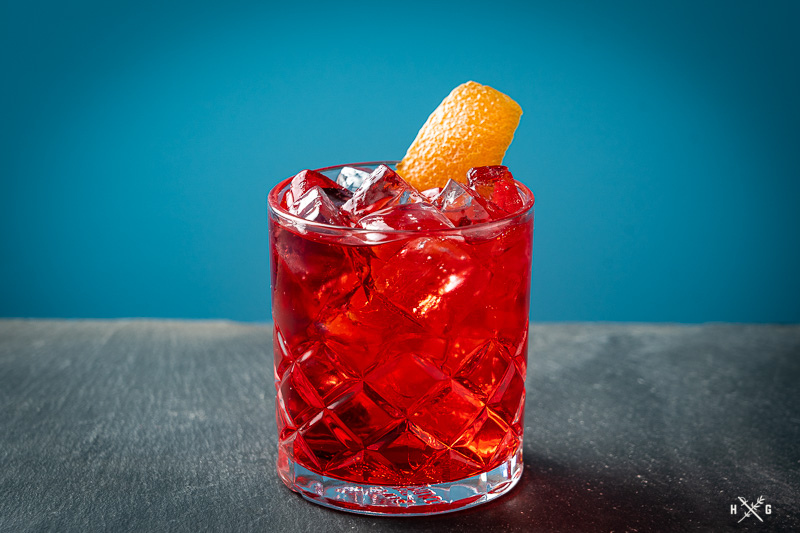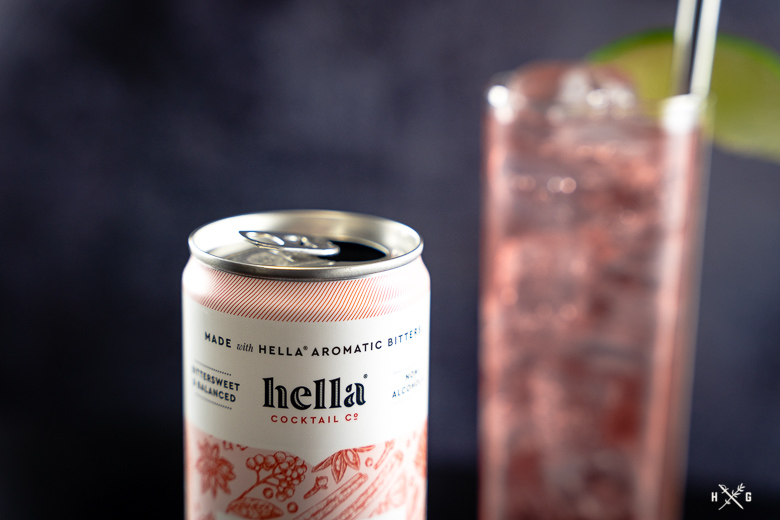Moderation and mindful consumption are here to stay. These 9 tips will ensure the alcohol-free cocktail recipes you create will have the same wow-factor as their traditional counterparts.
1. Don’t neglect the role of texture.
Texture can also be described as mouthfeel, and it’s a key part of the cocktail experience. While spirits have their own textures, the most prominent textures that are experienced in a cocktail come from the sweetener. Aside from liqueurs, the most common is 1:1 simple syrup. Other basic syrups include 2:1 rich simple syrup, honey syrup, demerara syrup, and maple syrup. Not only will these syrups give your non-alcoholic drink its own mouthfeel, but they’ll add layers of nuanced flavor.
An under-appreciated method to add texture to a non-alcoholic cocktail is to use an egg white. You’ll see this technique in classics like the Whiskey Sour, Ramos Gin Fizz, and Clover Club. To incorporate egg white, first dry shake your cocktail (no ice), then add the ice and shake again.
2. Understand how temperature affects flavor.
If you’re using club soda, tonic, syrup, etc., make sure that the ingredient is chilled. If you’re not serving the zero-proof cocktail on ice, chill your glassware. Cold cocktails are not only more enjoyable, but temperature also affects your perception of sweetness.
3. Flavored syrups open up possibilities.
Whether you make them on your own or purchase bottled syrups, this is a simple way to expand the flavor possibilities. If you’re making homemade syrups, refer to books like the Death & Co. Cocktail Codex and Dave Arnold’s classic, Liquid Intelligence to polish your extraction and infusion techniques.
Classic flavor combos like rosemary grapefruit, chili mango, and lemon basil are easy templates to follow—pair an herb or spice with a fruit. Again, Cocktail Codex has some great guides on syrups that’ll ensure you extract the most desirable flavor.
Some of my favorite cocktail syrups are made by Liber & Co., Portland Syrups, and Iconic Cocktail Company. If you’re looking for a replacement for St. Germain, I recommend Belvoir Fruit Farm Elderflower Cordial, which also comes in an Elderflower and Rose option. If you’re more of a fan of bitter, check out Giffard’s Aperitif Syrup. I use Giffard’s in my recipe for the best non-alcoholic negroni. If tonic syrups are more of your thing, check out my ultimate review of 19 tonic syrups.
4. Select quality tonics and sodas.
The number of premium tonic waters on the market now is almost too many to keep up with. My favorites are from Q Drinks and Fever Tree. They both offer small cans, bottles, and larger formats. However, I think that Fever Tree has gained the upper hand recently as their product line has become vast. Fever Tree offers 8 varieties of Tonic Water, and they’re some of my personal favorites. Their Ginger Beer and Pink Grapefruit Soda are by far my favorites.
5. Fresh herbs provide multiple benefits.
Aside from using a fresh herb to create a syrup, they’re also great to throw into the cocktail shaker and to use as a garnish. Reserve the muddling for ingredients like fruit and berries. If you’re incorporating a delicate herb in the shaker, just throw in full leaves. Shaking the cocktail will be enough to incorporate the flavors. My recipe for the minty and tart South Bend is the perfect example of this.
Remember, what we perceive as flavor is a combination of aroma and taste. Be sure to garnish your alcohol-free cocktail with fresh herbs to create the full sensory experience.
6. Don’t neglect the presentation.
You know the cliché—we eat with our eyes. This is true, and if you want an alcohol-free cocktail to stand up to its counterparts, present it the same way you would a traditional cocktail. Put some thought into the serving glassware. Does the glass need to be chilled? What’s the best kind of ice to use? (Need clear ice?) What’s the best garnish? Thoughtful presentation is a small step that provides a big return on the final result. It demonstrates that a non-alcoholic cocktail need not be a lesser version of its boozy counterpart.
7. Incorporate high-quality loose leaf teas.
Using tea as a base ingredient opens up a world that’s as complex as that of spirits. All tea (black, white, green, etc.) comes from the same plant, camellia sinensis, the difference is the processing method. Teas like fermented pu-erh will give you some funky flavors, while lapsang souchong will provide you with flavors reminiscent of a peaty Scotch.
For best results, brew tea at the proper extraction temperature and time for the specific style of tea. I find that a large French Press is perfect for this task. Room temperature infusions are another option.
Build on the flavors that are present in the tea you select. Everyone is familiar with Earl Grey, but not everyone knows that the aroma is from bergamot orange oil added to the tea leaves. Herbal teas are not technically tea since they don’t contain camellia sinensis leaves, but they can be extremely flavorful options. Two favorites are Scarlet Glow and Lemon Ginger, both from In Pursuit of Tea.
8. Flavor enhancers give that extra boost.
Bitters are the most common cocktail flavor enhancer. However, adding a few dashes of bitters is enough to transform an alcohol-free drink to one that could be 1%-2% alcohol by volume. It’s worth noting that if you’re only adding a small amount of bitters, and the drink’s total ABV is under 0.5%, this is still considered legally non-alcoholic in the United States.
Aside from bitters, there are two flavor enhancers that help accent a cocktail. Salt and acid.
Salt works with most cocktails containing citrus, chocolate, or coffee notes. You can add a small pinch to shaken drinks or create a saline solution for stirred drinks. (80:20 ratio, water:salt) My preference is to use a saline solution because I find it simpler to add a few drops to a cocktail.
Most often the acidity of a cocktail comes from fresh citrus juice. For a special acidic kick, add a few dashes of acid phosphate. This old school ingredient was used in soda fountains and is still present in many modern sodas. The benefit of acid phosphate is that the flavor is neutral and the acidity is potent, so you can get a boost without altering the flavor or diluting your cocktail.
9. Experiment and explore.
Don’t be afraid to try new flavor combinations and play with new recipes! The alcohol-free category is no longer something that lurks in the lower corner of a menu under the header “mocktails”. Industry publications like Imbibe have a dedicated section on their site for alcohol-free recipes. There are excellent books like Zero from the Alinea Group and Good Drinks by Julia Bainbridge. For those looking to simply practice a bit more moderation, Shim is an excellent choice for low-alcohol recipes.
— Cheers!



